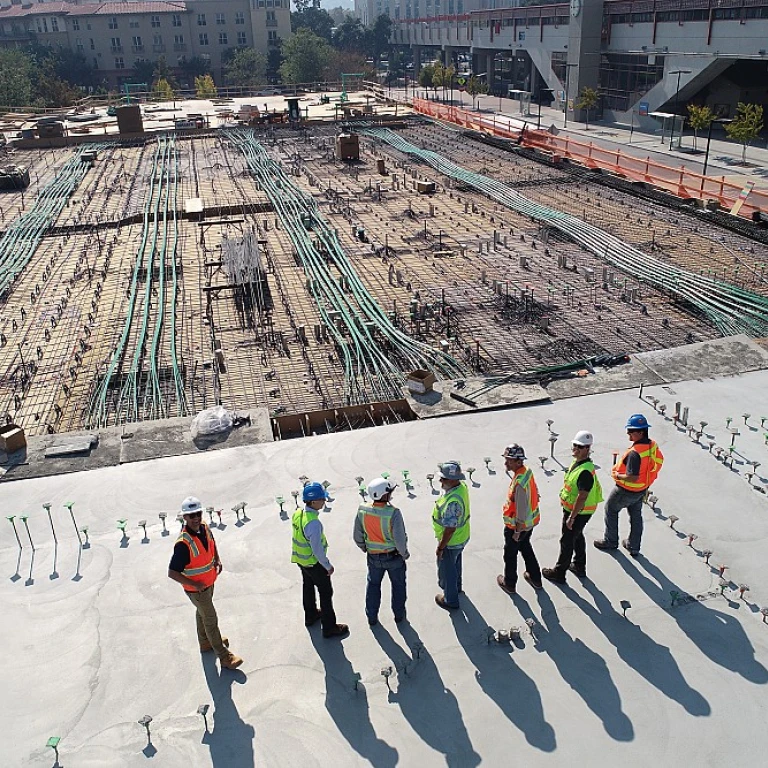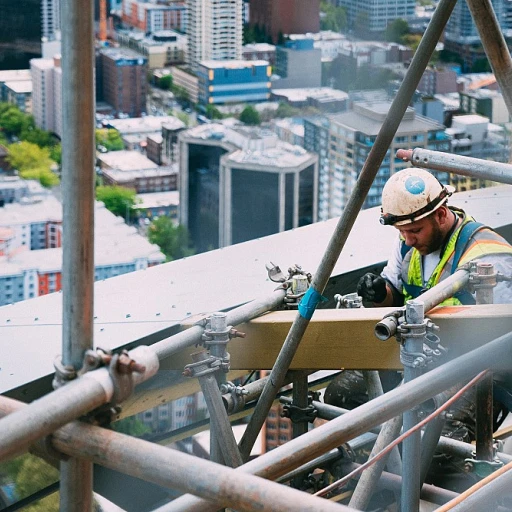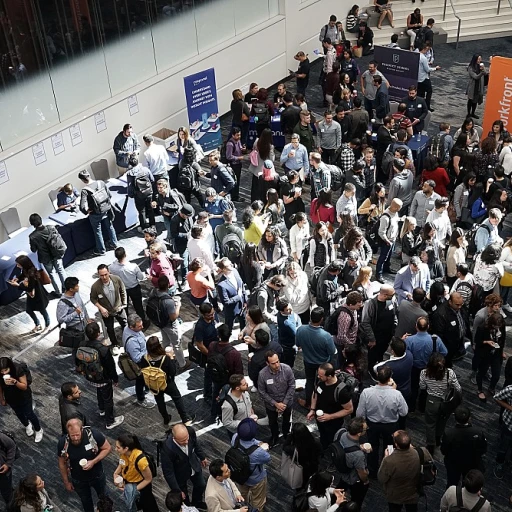The Rise of Robots in the Workplace
The Dawn of a New Robotic Era
In the bustling landscape of modern industries, the introduction of robotics into the workplace has begun to redefine the way we work. The proliferation of machines and automation has marked the dawn of a new era, garnering both excitement and trepidation. As organizations endeavor to enhance efficiency and productivity, robots are increasingly becoming indispensable allies in the workforce. Gone are the days when robots were confined to the realms of science fiction. Today, they are integral in transforming tasks that were once solely under the purview of humans. From mundane, repetitive activities to complex industrial operations, robotics technology is bridging the gap between imagination and reality. The emergence of robotics is influencing various sectors, with manufacturing often spotlighted as a forerunner. Industrial robots are not merely augmenting assembly line speed; they are reshaping entire processes, driving innovation, and setting new benchmarks for precision and consistency. However, the impact of robotics extends beyond traditional manufacturing settings. Service robots are also gaining momentum, providing support in healthcare, hospitality, and even retail environments. These robots are designed to integrate seamlessly with human counterparts, enhancing everyday work and enriching customer experiences. For those interested in further exploring this automation phenomenon and its implications for the workforce, exploring the future of job automation offers invaluable insights into the rapid advancements and shifts in labor dynamics. As we continue to embrace the rise of robots, it is essential to acknowledge not only the potential benefits but also to prepare for the challenges that lie ahead. This includes addressing concerns around human-robot interaction and the delicate balance between improving safety and expanding job opportunities. The future of work, marked by a symbiotic relationship between humans and robots, is set to be an intriguing journey of adaptation and transformation.Human-Robot Interaction: A New Dynamic
Understanding the Evolving Relationship
The integration of robotics in the workplace is not merely about machines taking over repetitive tasks; it introduces a dynamic partnership between humans and robots that reshapes how we think about collaboration. As robots become more prevalent across various industries, the way humans interact with these intelligent machines is undergoing a significant transformation, adding a new depth to the modern workforce. One of the key aspects of this evolving relationship is the mutual learning process. While robots bring precision, speed, and the ability to handle monotonous tasks without fatigue, human workers offer creativity, problem-solving skills, and a nuanced understanding of complex scenarios. Together, they form an unbeatable team that enhances productivity and innovation in ways previously thought impossible. Moreover, the presence of robots necessitates a new set of skills for human workers. Employees are encouraged to focus more on roles that require emotional intelligence, decision-making, and critical thinking — capacities that, at least for now, remain uniquely human. This shift in skills is an integral part of the future of work and reflects in educational curriculums and training programs designed to prepare the workforce for this symbiotic interaction. This human-robot collaboration also poses questions about the workplace culture. How do we ensure that workers feel valued and understand the benefits that robots bring to their roles? It's imperative for organizations to foster an environment of adaptability and openness, as they gradually incorporate robotics into the workforce. For instance, collectively brainstorming solutions to improve human-robot cooperation, or creating feedback loops where employees can voice their experiences, can help in smoothing this transition. In sum, the interaction between humans and robots is less about competition and more about complementing each other's strengths. As the robot workforce grows, the ability of humans to adapt and embrace this relationship will define the success and efficiency of workplaces in the future.Safety First: Robotics and Occupational Health
Prioritizing Safety in a Robotic Environment
As technology continues to integrate into our professional landscapes, ensuring a secure workplace environment takes precedence. Robotics in the workplace isn’t solely about enhancing productivity; it's about creating a safer workplace for human workers. The presence of robots prompts organizations to meticulously invest in safety protocols, reducing risks associated with manual labor tasks where injuries could previously occur.
Introducing automated solutions shifts the paradigm, requiring stringent adherence to regulatory standards and implementation of safety features. It’s not just about the robots themselves, but the environment they operate in and the potential hazards that could arise. Modern robots are designed with advanced sensors and technology, enabling them to detect human presence and avoid collisions, thus fostering a collaborative space where humans and machines coexist.
Moreover, workplace safety gets an upgrade with robotics in play. Organizations have the opportunity to monitor and control equipment from a distance, further minimizing risks. For those delving deeper into how digital transformation impacts workplace safety measures, exploring digital transformation in the modern workplace offers invaluable insights.
In essence, the advancement of robotics reshapes how occupational health and safety policies are crafted and maintained. As automation becomes a fixture of modern industries, businesses must continue adapting to stay ahead, ensuring that robots serve as allies in crafting a safe, efficient, and productive work environment.
The Impact of Automation on Jobs
The Changing Job Landscape: Automation's Footprint
With the integration of robotics into the workplace, automation is undeniably leaving a significant imprint on the job market. As robots continue to rise and become crucial players in various sectors, the nature of work is undergoing a transformative shift.
Initially, the thought of machines taking over jobs may fuel trepidation. However, it is essential to look at the broader picture. Robotics not only streamlines processes but also opens up opportunities for new roles that were previously non-existent. While certain manual and repetitive jobs may be at risk, automation paves the way for higher-skilled roles in programming, maintenance, and oversight of these sophisticated systems.
This evolution of jobs signifies a transition from pure manual labor to more intellectually demanding tasks, further elevating the need for workers to adapt and upskill. As automation permeates various industries, workers must acquire new skills to stay relevant in a dynamic work environment.
The industrial landscape is perhaps one of the most visible examples of this transformation. As mentioned earlier, industrial robots are revolutionizing manufacturing processes, allowing for increased efficiency and precision. Moreover, service robots are already enhancing everyday work experiences in sectors like healthcare and logistics by taking over monotonous tasks and allowing humans to focus on more complex responsibilities.
This shift brings about a complex balance between the advancement of technology and the workforce's adaptability. Policymakers, educational institutions, and businesses need to collaborate effectively to ensure that the transition is as smooth as possible, with an emphasis on training programs, career coaching, and continuous learning opportunities to equip the workforce with the necessary skills to thrive in an increasingly automated world.
Industrial Robots: Revolutionizing Manufacturing
Transforming Production Processes
The integration of industrial robots into the manufacturing sector marks a significant transformation, reshaping production processes. With robots taking on repetitive and physically demanding tasks, companies are experiencing enhanced efficiency and precision. These mechanical assistants are now an integral part of assembly lines, welding operations, and quality control processes. As mentioned previously, human-robot interaction has evolved, allowing for a more collaborative work environment where humans and machines complement each other's strengths. Furthermore, industrial robots contribute to safer workplaces. By taking over hazardous tasks, they help reduce workplace injuries, aligning with the growing emphasis on occupational health and safety. As we continue to embrace this transformative wave, manufacturers are investing in advanced robotics to remain competitive, pushing the boundaries of what's possible in production capabilities. The ripple effect of robots in manufacturing extends to job creation in sectors related to robotics programming, maintenance, and engineering. Although automation drives concern over job displacement, it simultaneously creates new roles and opportunities for upskilling, ensuring that the workforce evolves alongside technology.Service Robots: Enhancing Everyday Work
Service Robots: Transforming Daily Operations
In the ever-evolving landscape of the workplace, service robots are making a significant mark by enhancing efficiency and productivity across various sectors. Unlike their industrial counterparts that primarily operate in manufacturing settings, service robots are designed to assist in everyday tasks, offering support in areas such as healthcare, hospitality, and retail.
In healthcare, for instance, service robots are revolutionizing patient care by performing tasks ranging from delivering medication to assisting with surgeries. These robots are not only alleviating the workload of medical staff but also ensuring precision and consistency in patient treatment. In hospitality, robots are being deployed to manage front desk operations, handle luggage, and even provide room service, creating a seamless experience for guests while allowing human employees to focus on more personalized interactions.
The integration of service robots into the workplace is also fostering a new dynamic of human-robot interaction. As discussed earlier, this interaction is pivotal in ensuring that robots complement human efforts rather than replace them. By taking over mundane and repetitive tasks, service robots free up human workers to engage in more creative and strategic roles, ultimately enhancing job satisfaction and workplace morale.
While the rise of robots in the workplace has sparked concerns about job displacement, it is important to note that service robots are creating new opportunities as well. As businesses adopt these technologies, there is a growing demand for skilled workers to develop, maintain, and manage robotic systems. This shift not only requires upskilling the current workforce but also encourages the creation of new roles that did not exist before.
In summary, service robots are playing a crucial role in reshaping the future of work by transforming daily operations across various industries. As we continue to embrace this technological advancement, the focus remains on leveraging the strengths of both humans and robots to create a more efficient and harmonious workplace environment.









